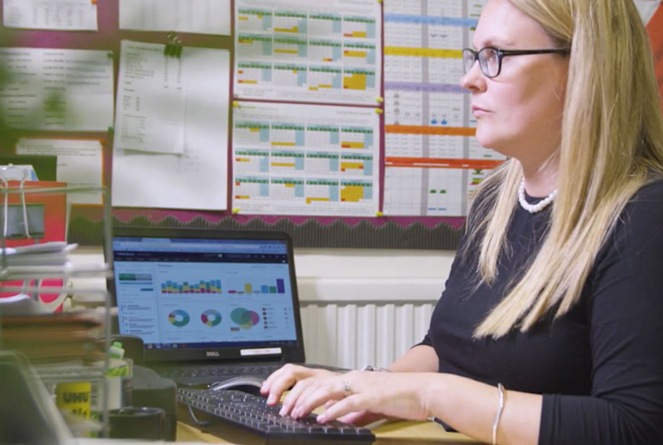Introduction
Safeguarding is a critical aspect of a school's responsibility, aiming to protect children from harm and ensure their overall well-being. This commitment was solidified in statutory guidance for educators in England following the tragic case of Daniel Pelka, a primary school student who suffered fatal abuse. The subsequent serious case review revealed a failure to identify signs of abuse within the school. The guidance 'Keeping Children Safe in Education' addressed this, emphasising establishing a safeguarding culture within educational institutions. When developing an open and positive safeguarding culture, it's also vital to remember that everything should revolve around what's best for the child. This means keeping their well-being in mind when making policies and decisions
This blog explores the concept of an open and positive safeguarding culture and a school’s accountability, examining its impact and individual decision-making when faced with safeguarding issues in schools.
What do we mean by culture?
Culture embodies an organisation’s fundamental values, beliefs, and practices, influencing attitudes, behaviours, and decisions. A safeguarding culture comprises explicit values and behaviours articulated at all levels, clear policies, courageous management, and mechanisms for children and young people to voice their concerns.
The role of school leadership in cultivating a culture
Effective leadership at all levels is pivotal in shaping the safeguarding culture within a school. Leaders set the tone, modelling desired attitudes and behaviours. Furthermore, all adults within the school community hold positions of trust and must uphold their responsibilities toward the children in their care.
Culture and peer groups in schools
Peer groups or 'teams within a team' significantly influence attitudes and behaviours within a school, sometimes conflicting with the school's stated values. The prevalence of sexual harassment and violence among pupils, as revealed in the 'Everyone's Invited' initiative (a movement that addresses sexual harassment in schools, giving survivors a platform to share experiences and advocate for systemic change) and subsequent Ofsted review, underscored the impact of peer groups on reporting behaviour. These cultural barriers can lead to underreporting and hinder early identification of potential risks and harm.
The importance of a safeguarding culture
A safeguarding culture within an organisation, especially in the context of educational institutions, refers to a set of shared values, beliefs, attitudes, and behaviours that prioritise the safety, well-being, and protection of individuals, particularly vulnerable populations like children. This culture plays a crucial role in shaping the policies and practices of the school, directly impacting the overall safety and security of the individuals involved.
Policy implementation and practice
A strong school safeguarding culture guides the development and implementation of policies and practices to ensure every child's safety. It provides a framework that helps create comprehensive, proactive, and effective policies for preventing and addressing issues.
Confidence and transparency
A culture of safeguarding promotes confidence and transparency within the school. Individuals, including staff, pupils, and their families, feel more comfortable reporting concerns or potential risks because they believe these concerns will be taken seriously and addressed promptly. Transparency in processes and actions further enhances this trust, reinforcing the commitment to safety and well-being.
Overcoming cultural barriers
Cultural differences can sometimes make it difficult to report safeguarding concerns, but it's essential to respect and understand these differences without accepting any type of abuse. These barriers may include fear of repercussions, societal stigma, or a lack of awareness about what constitutes abuse or harm. A strong safeguarding culture actively works to break down these barriers through education, awareness campaigns, and open dialogues. By promoting an environment that encourages open communication and provides assurance of protection, individuals are more likely to come forward and report concerns.
Promoting positive social norms
A safeguarding culture works towards establishing positive social norms within the school. It emphasises the collective responsibility and accountability of all staff to ensure the safety of vulnerable children, thus encouraging individuals to watch out for and support each other. By promoting empathy, understanding, and a shared commitment to safety, the culture helps shape behaviour in a way that prevents harm and encourages early intervention when needed.
Creating a safe environment
Ultimately, the primary goal of safeguarding culture and accountability is to create and maintain a safe environment for all pupils. This includes physical safety, emotional well-being, and protection from any form of harm or abuse. When a school actively cultivates a culture prioritising safeguarding, it becomes a safer place for everyone to learn, work, and thrive.
How to create a strong safeguarding culture in schools
Creating a robust safeguarding culture is a comprehensive endeavour involving every school community member. Key steps include:
- Conducting a cultural review
- Engaging stakeholders through regular surveys
- Facilitating easy reporting mechanisms for pupils
- Identifying safeguarding risks
- Communicating clear vision and values
- Integrating safeguarding into the school improvement plan
- Reviewing roles and responsibilities
- Involving pupils
- Promoting the reporting of concerns
- Ensuring staff are trained in the latest safeguarding practices, rules and procedures
Conclusion
Prioritising the development of a strong safeguarding culture is foundational to successful safeguarding practices in schools. By creating an open and transparent environment, schools can build confidence, encourage engagement, and facilitate the reporting of concerns, ultimately enhancing the safety and well-being of all pupils within the school community.
Enhance Your School's Safeguarding Practices with Juniper's Expert Training
We understand the importance of creating a robust safeguarding culture in schools. Our team of training experts is here to equip your staff with the knowledge and tools they need to prioritise the safety and well-being of your pupils.
We offer comprehensive online and in-person training courses to help your school create a safer environment for your children.
Take a look at our Safeguarding and other related courses online that can make a real difference to safeguarding within your school or trust.


/Primary%20school%20.jpg?width=2000&name=Primary%20school%20.jpg)








.png?width=940&height=788&name=Lingfield%20College%20Case%20Study%20(5).png)
-1.png?width=1000&height=833&name=National%20Association%20of%20Head%20Teachers%20(3)-1.png)
-3.png?width=1080&height=1080&name=Untitled%20design%20(10)-3.png)






